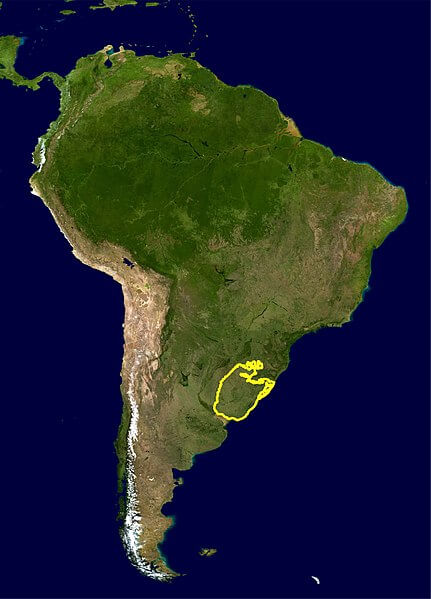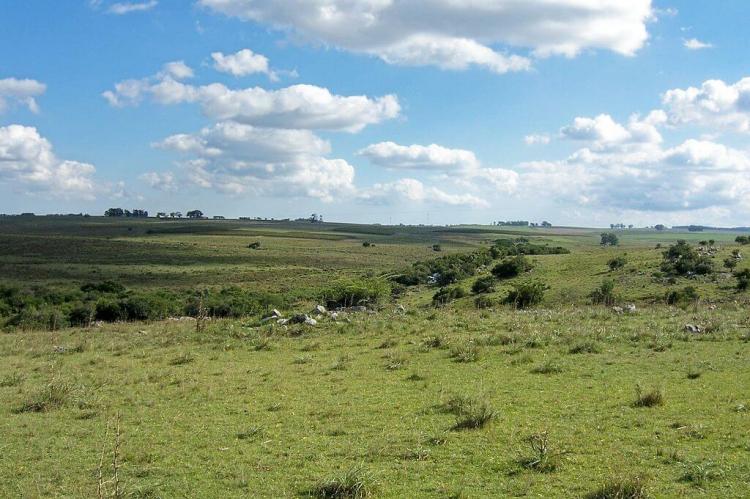The Uruguayan Savanna: A Rich Tapestry of Grasslands and Biodiversity
The Uruguayan savanna, also known as the Brazilian-Uruguayan savanna, stretches across the southern region of the Brazilian state of Rio Grande do Sul and encompasses the entirety of Uruguay. This ecoregion, characterized by subtropical grasslands and savannas, offers a mosaic of habitats.
The Uruguayan Savanna: A Rich Tapestry of Grasslands and Biodiversity
The Uruguayan savanna, also known as the Brazilian-Uruguayan savanna, stretches across the southern region of the Brazilian state of Rio Grande do Sul, encompasses the entirety of Uruguay, and extends into a small portion of Argentina along the Uruguay River. Subtropical grasslands and savannas characterize this distinct ecoregion within the larger Pampas region of South America. It offers a mosaic of habitats, including medium-tall grasslands, gallery forests, palm savannas, and submontane forests.
Geological Diversity
The geological complexity of the Uruguayan savanna region adds to its unique character. The terrain includes a mix of Precambrian, Cretaceous, Jurassic, and more recent sedimentary rocks. Notably, the eastern side of the ecoregion is dominated by two-million-year-old metamorphic and magmatic rocks. A coastal strip approximately 200 kilometers (124 miles) wide also showcases six-million-year-old metamorphic rocks.
Climate and Precipitation
Annual precipitation in the Uruguayan savanna varies from around 1,000 millimeters (40 inches) in the south to 1,300 millimeters (50 inches) in the north. The average temperature ranges from 16°C (61 ºF) in the southern reaches to 19°C (66 ºF) in the north. This climatic diversity contributes to the rich biodiversity found within the region.
Flora and Fauna
The Uruguayan savanna boasts an impressive array of flora and fauna. It is home to 72 mammals, including iconic species such as the pampas deer, Guazauvirá deer, and capybara—the largest rodent in the world. Many of these mammals find refuge in the gallery forests along the Uruguay River and the ravines of the northern areas.
The ecoregion is also a haven for avifauna, with approximately 80 bird species calling it home. Among them are the greater rhea, ochre-breasted pipit, yellow cardinal, saffron-cowled blackbird, and pampas meadowlark. These birds contribute to the rich tapestry of biodiversity within the savanna landscape.
Conservation Status and Challenges
Despite its ecological significance, the Uruguayan savanna faces critical endangerment due to extensive habitat loss and fragmentation. Cattle ranching, a vital component of Uruguay's economy, has led to widespread alteration of the natural habitat. As a result, only small, isolated patches of intact habitat remain.
Recognizing the situation's urgency, the Uruguayan government has taken steps to preserve what remains of the native flora in this ecoregion. Efforts to mitigate habitat loss and restore degraded areas are crucial to safeguarding the biodiversity of the Uruguayan savanna for future generations.
Conclusion
In conclusion, the Uruguayan savanna is a testament to the intricate interplay between geological forces, climatic conditions, and biodiversity. Its expansive grasslands and diverse habitats provide a home to a wealth of plant and animal species, many of which are endemic to the region. While facing significant conservation challenges, concerted efforts to protect and preserve this unique ecosystem are essential for ensuring its survival in the face of ongoing threats.

Map depicting the location of the Uruguayan savanna ecoregion in Uruguay, Brazil, and Argentina
